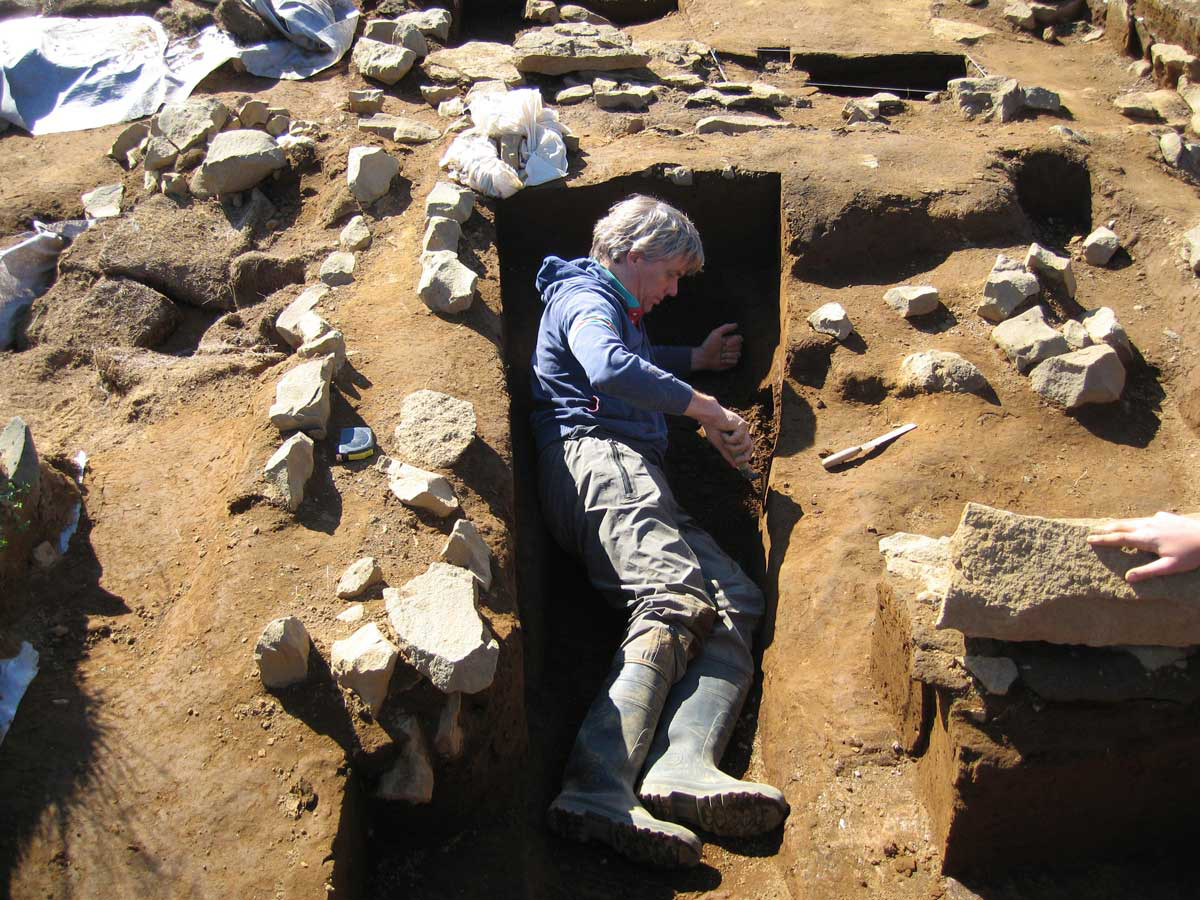Archaeological Field Work | 2005 Field Season - Egil’s Grave? and Ship-Settings
The 2005 fieldwork of the Mosfell Archaeological Project (MAP) entailed a wide range of archaeological work on a number of sites throughout the Mosfell Valley with the intention of widening the scope of our conclusions from the past four years of intensive excavation. By shifting our focus to the valley system as a whole, we will pursue the goal of understanding how these sites all worked together as part of one Viking Age human landscape.
The archaeological work at Hrísbrú clarified the architecture of an early church and uncovered the first traces of a domestic structure that may be the skáli, or longhouse, associated with the church.
During the 2005 season we uncovered a grave shaft underneath the church chancel, beneath the place where the altar would have stood. The grave had been cut into pre-church occupation layers and opened and emptied. As Egil Skallagrímson, the warrior-poet of Viking Age Iceland, was reportedly buried under the altar of the church at Hrísbrú and then disinterred after approximately 150 years, the evidence of an emptied grave under the floor of the chancel generated considerable excitement. Although it is impossible to say whether or not this is the grave of Egil, the presence of a hole dug in the floor of the chancel ending in an emptied grave beneath the altar area parallels the description found in Egil’s Saga.
Investigations of a ship setting at Borg, further east in the valley, established that the arrangement of stones is of considerable age and showed the promise of future work in the area.
A map of the Hrísbrú farmstead (click to enlarge).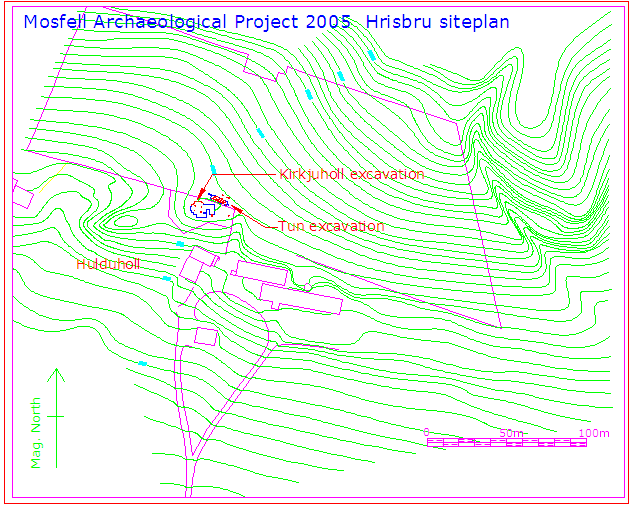
A map of the Hrísbrú church showing the sill beam locations (click to enlarge).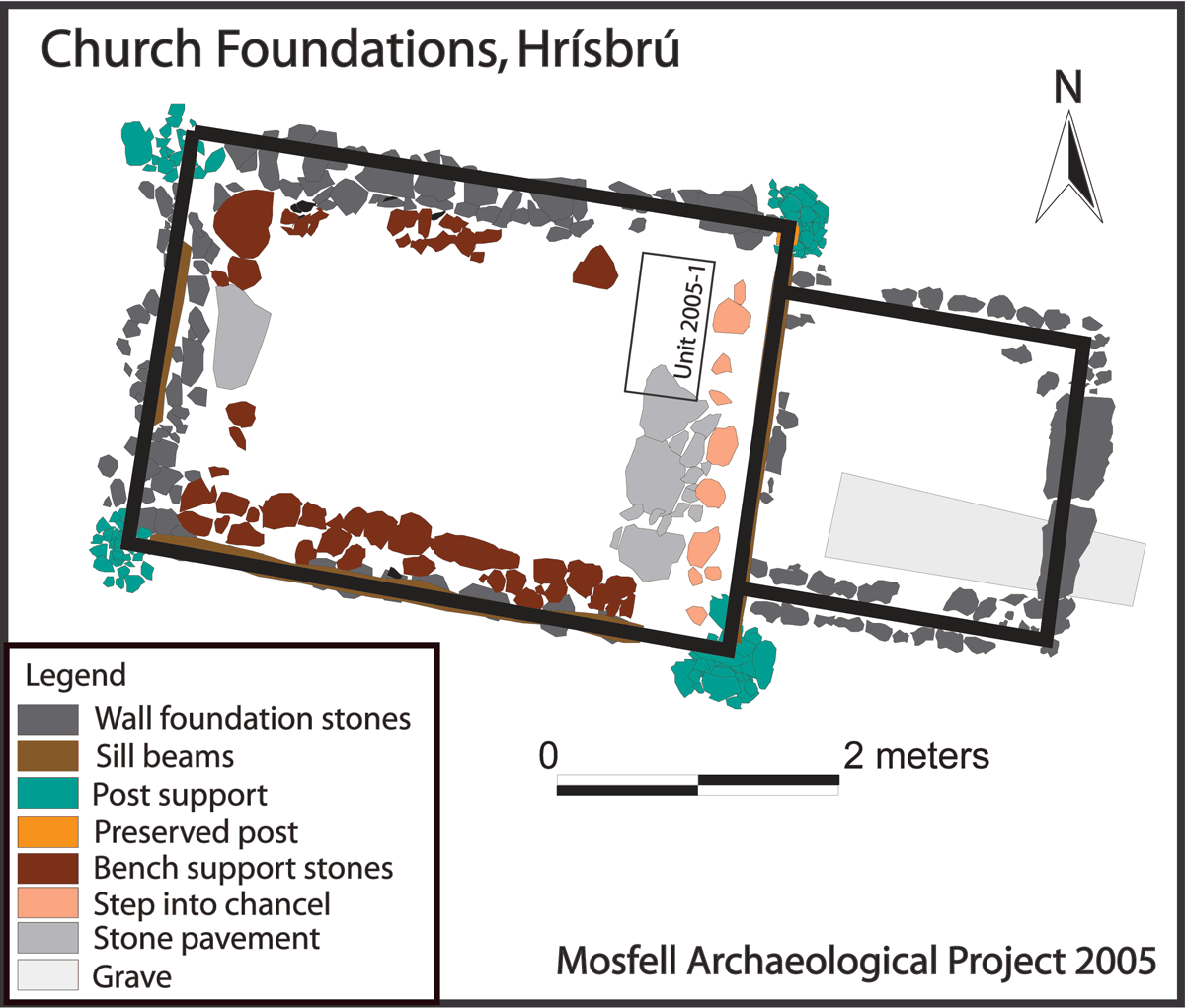
A map of the Hrísbrú church and churchyard burials (click to enlarge).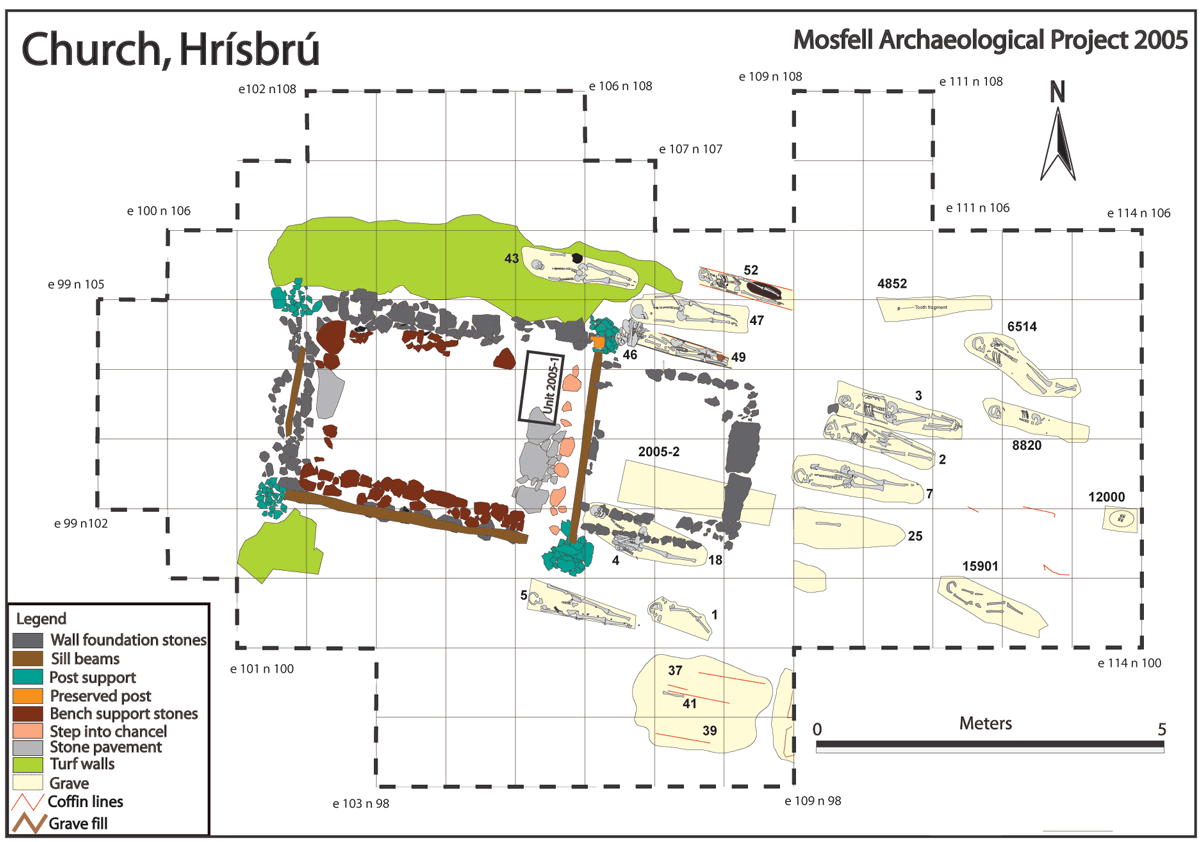
Ship-settings in the Mosfell Valley (click to enlarge).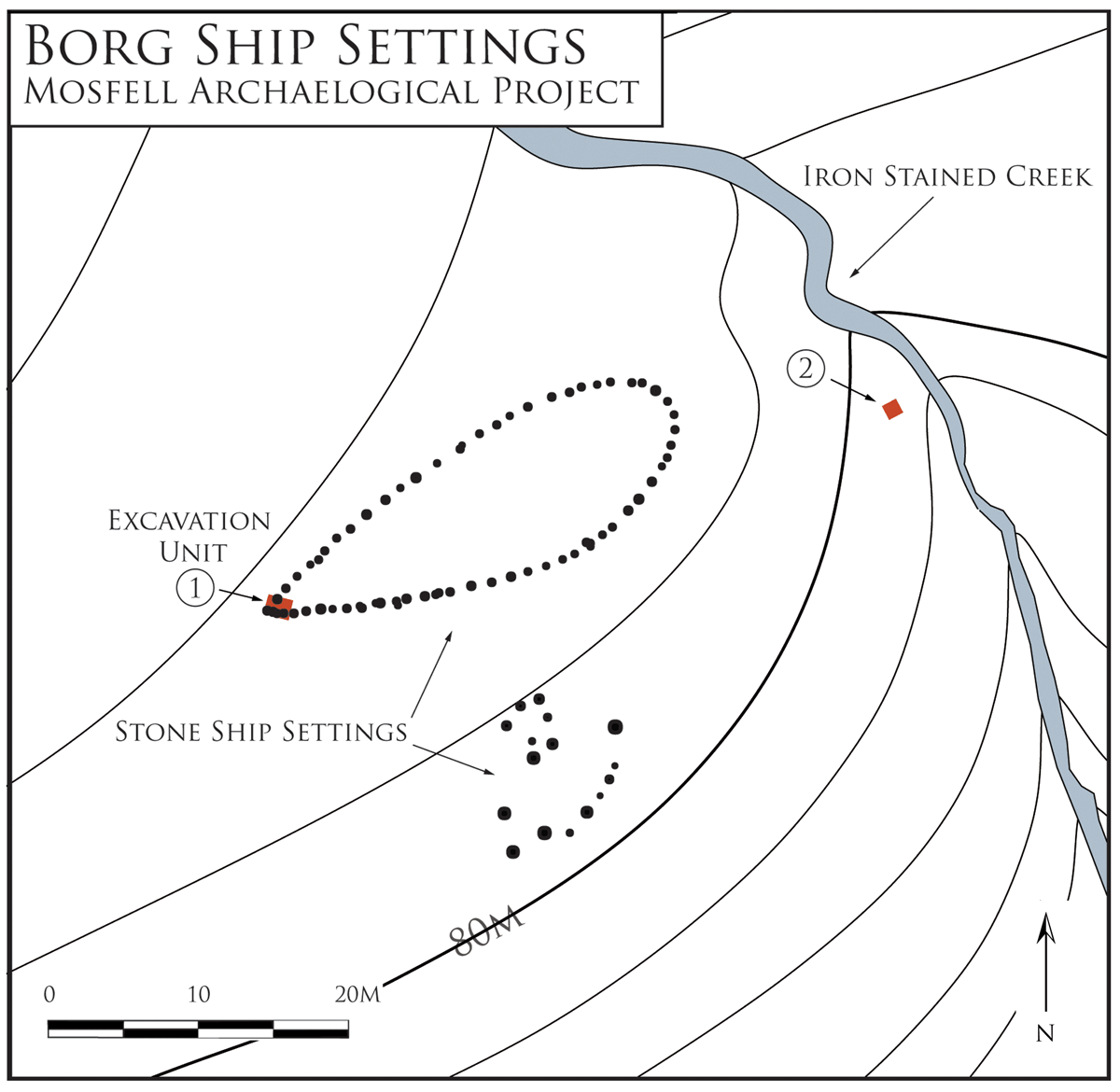
Jon Erlandson excavating a grave beneath the church chancel.